- Home
- Неизвестный
Sherlock Holmes Mystery Magazine #1
Sherlock Holmes Mystery Magazine #1 Read online
Table of Contents
COPYRIGHT INFORMATION
FROM WATSON’S SCRAPBOOK
BAKER STREET BROWSINGS: BOOK REVIEWS, by Kim Newman
SCREEN OF THE CRIME, by Lenny Picker
ASK MRS HUDSON, by (Mrs) Martha Hudson
SHMM SPEAKS WITH RON GOULART
THE STRANGE CASE OF THE HAUNTED FREIGHTER, by Carole Buggé
THE MYSTERY OF THE MISSING AUTOMATON, by Ron Goulart
THE BET, by Marc Bilgrey
THE AUTOMATON MUSEUM, by Edward D. Hoch
ON THE HEIR, by Hal Charles
LOST AND FOUND, by Jean Paiva
THE “GLORIA SCOTT” by Arthur Conan Doyle
COPYRIGHT INFORMATION
Publisher: John Betancourt
Editor: Marvin Kaye
* * * *
Sherlock Holmes Mystery Magazine is published quarterly by Wildside Press, LLC.
Copyright © 2008 by Wildside Press LLC.
Published by Wildside Press LLC.
www.wildsidebooks.com
* * * *
The Sherlock Holmes characters created by Sir Arthur Conan Doyle are used by permission of Conan Doyle Estate Ltd., www.conandoyleestate.co.uk.
FROM WATSON’S SCRAPBOOK
When it comes to acts of hubris, Sherlock Holmes Mystery Magazine might well earn its staff assignment to the lower ridges and clefts of Mt. Purgatorio. After all, it is published in America, where aficionados of the Great Detective call themselves Sherlockians, not Holmesians, as we do in England. Whereas I have had my share of pleasant encounters socially and professionally with the Baker Street Irregulars (BSI), Holmes bridles at what he has termed “characteristic Yankee familiarities,” and therefore these pages will embrace the adjective employed on this side of the Atlantic pond: Holmesian.
When I began chronicling my friend’s career, I had no idea my efforts would ultimately engender a host of adaptations, and sometimes distortions. My business agent, a Scottish gentleman named Sir Arthur Conan Doyle, was unable to stem this flood of inaccuracies, so let me set the record straight on a few points.
First, a long overdue confession: Conan Doyle, a splendid novelist who on occasion effectively assumed the role of detective himself, had considerable to do with writing up and polishing my case notes!
Next, this slanderous business concerning Holmes’s use of drugs … it is a fact that my friend used to inject himself with a seven per cent cocaine solution of cocaine, and although it is a habit that I, as a physician, deplore, please understand that in those days it was neither illegal nor even deemed socially disreputable. Holmes abandoned the practice altogether, but let me also point out that his seven per solution was comparatively mild. A therapeutic dose of cocaine in those days was set by British pharmacologists at ten per cent. Another nettle is Irene Adler … nothing infuriates Holmes more than to be portrayed mooning about like a love-struck adolescent. Romantics pounce upon that line I wrote in A Scandal in Bohemia: “To Sherlock Holmes she is always the woman.” But apparently they skip over the paragraph that directly follows —
“It was not that he felt any emotion akin to love for Irene Adler. All emotions, and that one particularly, were abhorrent to his cold, precise, but admirably balanced mind. He was the most perfect reasoning and observing machine that the world has seen: but he never spoke of the softer passions save with a gibe and a sneer.”
Now, gentle reader, can you tell me the street address of the rooms that I shared with Sherlock Holmes? Many Holmesians (and probably most of the ‘Sherlockians’) would reply, “221 B Baker Street?” But you see, Holmes and I lived one flight up in Apartment B. Thus, our proper street address was 221 Baker Street.
In spite of these noted exceptions, I generally enjoy the Holmes pastiches, plays and films. It irritates both Holmes and Mrs Hudson that I am often portrayed as a bumbling Colonel Blimp, but I don’t really mind. The royalties elicited from producers buffer my pride marvelously. As for Holmes, he has scant tolerance for actors who play him, though he has the grace not to mention names. Yet for all that, he has a prima donna’s ego and when pressed, begrudgingly admits his manner and inflection were effectively captured by Mr. Rathbone.
Well, now, I’ve had my say for this issue, so I shall turn over the residuum of this column to the editor, Mr. Kaye.
—John H. Watson, M. D.
* * * *
It is both a pleasure and a heavy responsibility to assume the editorial duties of a second Wildside Press periodical, the first being H. P. Lovecraft’s Magazine of Horror, now approaching its third issue (or rather, fourth, since we actually did an issue 1.5 as a special extra for subscribers.) This magazine is an assignment I relish, though I am well aware that I am perhaps standing in for that peerless Holmesian scholar, the distinguished Parker College (PA) professor J. Adrian Fillmore, whose intimate knowledge of the mind and character of Sherlock Holmes led him to edit the St. Martin’s Press anthologies, The Resurrected Holmes and The Confidential Casebook of Sherlock Holmes. Unfortunately, Professor Fillmore is on an extended sabbatical and cannot even be reached by e-mail; some concern has been expressed about his health since his own Holmesian adventures, but a recent communiqué from the estimable Professor Harold Shea assures us that Fillmore is still actively involved in new literary worlds and vistas. (Regrettably, Shea could not resist a gratuitous observation about his colleague: “Gad, what a name!”)
My own contributions to Holmesian literature began in 1971 when Luther Norris published a now-rare edition of 300 copies of The Histrionic Holmes, my study of the Great Detective’s acting skills, which brought a most gratifiying encomium from the late great John Dickson Carr. In 1979, Holmes played a role of some importance in my humorous fantasy, The Incredible Umbrella, but came front and center in 1994 when I edited a large Holmesian anthology, The Game is Afoot, for St. Martin’s Press, a book followed by the two above-cited works that Professor Fillmore’s labours helped bring about. I also wrote and produced a play of the same title as my first anthology, and my theatre company, The Open Book, is helping to produce Carole Buggé’s new musical, Sherlock Holmes.
My non-Holmesian credits include five Hilary Quayle and two Marty Gold mystery novels; teaching mystery writing for more than twenty years at New York University (am very proud of the many students who entered the profession and sold successful novels and at least one screenplay); serving as a judge for the Edgar Awards of the Mystery Writers of America, and chairman of the judging committee for many years for the Nero Award offered by The Wolfe Pack, the national Nero Wolfe society.
* * * *
Sherlock Holmes Mystery Magazine has a few things in common with H.P. Lovecraft’s Magazine of Horror: both are quarterlies, both pay homage to two famous genre names, but neither are limited to pastiches and parodies of their titular progenitors. While Sherlock Holmes Mystery Magazine will always reverence the Holmesian Canon, the mutual intention of its editor and publisher is to create a new mystery magazine with as great a scope as its contributors enable us to offer.
Thus, while Watsonian pastiches and spoofs will appear as often as the merit of such submissions deserve, they will be counterbalanced by new mystery stories, period pieces, tales of murder and other crimes, puzzle/riddle tales if anyone still writes them, and in short, mysteries set in the present, past, and possibly even the future. Science fiction is less likely in these pages, but superior SF crime stories and mysteries have been written by authors such as Isaac Asimov, Alfred Bester, Lloyd Biggle, Ray Bradbury, and Harry Harrison, so I plan to keep an open mind a
bout this.
When I was a Nero Award judge and since then, I have become increasingly concerned that today’s mystery novels are really crime stories. To me, a genuine mystery story is one that provides clues and red herrings, is reader-solvable (or at least creates that illusion!); that is, in short, an example of the fiction championed by Arthur Conan Doyle (sometimes!), by Rex Stout, Ellery Queen, Craig Rice, Clayton Rawson, Agatha Christie, John Dickson Carr, etc. I am afraid that modern writers have either grown lazy, or are at a loss as to the techniques of forging sleuth-driven mysteries … a term I am gratified to attribute to the publisher of Sherlock Holmes Mystery Magazine, John Betancourt, who is himself a thoroughly capable mystery writer.
I worry that we will not receive submissions of the old school of mystery, though even if we do, Sherlock Holmes Mystery Magazine will strive not to earn any labels like “retro” or “throwback.” We will never exclude that excellent writing that so many of the newer authors are capable of (I am especially impressed by Lia Matera).
What I hope to create is a balanced mix of mystery fiction and articles, highlighting, I hope, what Ellery Queen once called the “Grand Old Game.”
* * * *
I hope that the contents of this initial issue constitute a modest attempt to exemplify our hopes for the shape, direction and future of Sherlock Holmes Mystery Magazine. In addition to insights into issues both Holmesian and ratiocinative from our estimable columnists Kim Newman and Lenny Picker, the nonfiction portion of Sherlock Holmes Mystery Magazine Vol. 1, No. 1 includes an interview of the awesomely prolific Ron Goulart and a letters column by no less a personage than Sherlock Holmes’s landlady Mrs Hudson, who fervently hopes that readers of this first issue will write to her promptly about any care and concern of the heart, head, stomach or wherever, for as she puts it, “One grows with the times, and what a relief to escape the strictured mores of the Victorian and Edwardian eras. I doubt, though, that dear Dr Watson shares my views.” (Yes, she and Watson … and of course, Holmes … still live. But didn’t you know that?)
For those readers (if such exist) who are not familiar with the original sixty Sherlock Holmes adventures, cases and memoirs, Sherlock Holmes Mystery Magazine intends to reprint one each issue, beginning with The “Gloria Scott,” which was published in 1894 in the fourth Holmes book, and second of the short story collections, The Memoirs of Sherlock Holmes. The fourth of the tales in that volume, it is offered first in this magazine because it is, in effect, Sherlock Holmes’s very first case.
The nautical theme of The “Gloria Scott” is echoed in the other Holmes tale in these pages. “The Strange Case of the Haunted Freighter,” a brand new Holmes adventure with occult overtones that was written especially for Sherlock Holmes Mystery Magazine by Carole Buggé, author of numerous Sherlock Holmes tales, including two critically acclaimed novels, The Star of India and The Haunting of Torre Abbey, from St. Martin’s Press; she is, in my estimation, the hands-down best Holmes pastiche writer since Ellery Queen’s A Study in Terror.
* * * *
This issue’s non-Holmesian stories begins with The Mystery of the Missing Automaton, a new Harry Challenge mystery by Ron Goulart, and — odd coincidence! — a new Simon Ark case, The Automaton Museum, by Edward D. Hoch. Another bond of sorts between these stories is that though their detectives are to some extent associated with the fantasy genre, neither of these adventures cross over; they are genuine mysteries.
Hal Blythe’s amusing puzzle with Holmesian undertones, On the Heir, is the first of a new series. Marc Bilgrey’s The Bet is both a club story and a tale of murder, as is Lost and Found, one of the posthumous short stories of Jean Paiva, author of the highly regarded horror novels, The Lilith Factor and The Last Gamble.
The second issue of Sherlock Holmes Mystery Magazine Sherlock Holmes Mystery Magazine is in its early stages of preparation, and is expected to feature a wicked riff by Kim Newman on A Study in Scarlet — from Col. Moran’s point of view!
Till then, please send your thoughts and problems to Mrs Hudson … and if you wish to contribute new mystery fiction to Sherlock Holmes Mystery Magazine, by all means query me at this email address:
Canonically Yours,
Marvin Kaye
BAKER STREET BROWSINGS: BOOK REVIEWS, by Kim Newman
The New Annotated Sherlock Holmes, ed. by Leslie S. Klinger, Norton, $75.00/£35.00
Sherlock Holmes: The Hidden Years, ed. by Michael Kurland, St. Martin’s Minotaur, $24.95
* * * *
As the title The New Annotated Sherlock Holmes indicates, this Norton edition is not the first time that Sir Arthur Conan Doyle’s Holmes stories have been published in annotated form. Editor and annotater Leslie S. Klinger admits that the hundred-pound gorilla of the field is the late William S. Baring-Gould, whose The Annotated Sherlock Holmes (1967) remains one of the most battered and consulted volumes in my library (any writer considering a Victorian British setting should have this — it’s full of good stuff like hansom cab fares and ladies’ fashions). Norton’s handsome set, two thick volumes in a sturdy case, even looks like my John Murray edition of the Baring-Gould, down almost to the weight of the paper and the smell of the ink. There are, however, significant differences between Klinger and Baring-Gould; devotees will have no cause to retire their old Annotated and replace them with the New one, though they will need both sets.
Baring-Gould gets all four novels and the 56 short stories into his two (sometimes one) thick volumes, while Klinger saves the four book-length adventures (need I specify? — A Study in Scarlet, The Sign of the Four, The Hound of the Baskervilles and The Valley of Fear) for an as-yet-undelivered third. Baring-Gould was far more interested in providing the real-world dates for the fictional events of the stories and arranged the stories in (debatable) order of internal chronology (he places The Sign of the Four after ‘A Scandal in Bohemia’, which Doyle plainly did not intend). Klinger arranges them as Doyle did when collecting the stories into his five collections, The Adventures of Sherlock Holmes, The Memoirs of Sherlock Holmes, The Return of Sherlock Holmes, His Last Bow and The Case-Book of Sherlock Holmes. As usual, even simple decisions aren’t definitive: ‘The Cardboard Box’ appeared in the Strand magazine run of the Memoirs and the first impression of the British edition of the collection, but was dropped from the American and most subsequent British editions (perhaps because of its relative gruesomeness), but the story opens with an especially neat if irrelevant bit of deduction (‘You are right, Watson, it does seem a most preposterous way of settling a dispute’) which was lifted probably by Doyle and pasted into the book publication of ‘The Resident Patient’.
Baring-Gould reproduces the type from the Strand, and notes differences between original and subsequent editions; Klinger usually relies on copy from the Strand but set in an easier-to-read font, also pointing up occasions where misprints or errors have been corrected. Norton present the notes in purplish-crimson, which makes it easier to distinguish between Doyle and Klinger, though this doesn’t extend to introductory and supplementary essays (on things like guns, gambling and deadly snakes, all attached to stories which highlight these topics). It’s easy to understand why Norton and Klinger have led with the short stories rather than the novels — of the four, only Baskervilles isn’t strangled by its lengthy backstory — but Holmes and Watson, and their world, were introduced in the first two novels, which were written and published before the first set of stories and might well have been the beginning and the end of Holmes. The stories may show a certain decline in quality as the series progresses, with one or two ‘remakes’ of successful earlier tales (long-running TV series tend to do the same thing), but there are unmemorable efforts early on (‘A Case of Identity’, the third story, is much less impressive than the rest of the Adventures) and gems late in the day (‘The Problem of Thor Bridge’ has most of the old snap). Re-reading the
entire oeuvre in one go isn’t advisable, but pulling the book down and savouring the tales one a week or a month is a hugely reliable pleasure — they ‘play’ very well read aloud, and parents of children slightly too old for babyish books find them a wonderful excuse for melodrama (it’s rarely remarked, but Doyle is a fond, funny prose-writer and gets a lot of laughs in performance).
The shared approach of Baring-Gould and Klinger is that both proceed from the premise that Holmes and Watson were real people, and that Watson’s manuscripts were prepared for publication by Doyle. Doyle started this when he wrote in self-reflective moments as Holmes comments on Watson’s published versions of his cases or Mycroft mentions that Sherlock has become more famous thanks to the publicity accorded by his ‘Boswell’, though he couldn’t have foreseen how out of hand it would get. This means that there are two types of annotation: firstly, footnotes that explain or elucidate references that might have been obvious to the original readers but with time have become obscure, or sometimes references of matters of British geography, politics, culture or language Americans have never quite fathomed (eg: explaining what the Serpentine is, something as familiar to British readers as, say, a reference to Golden Gate or Central Park would be to Americans); and, secondly, attempts to rationalise ‘errors’ made by Watson (or Doyle) or to uncover the true identities of characters Watson is supposed to have disguised to avoid scandal (royals, politicians, society folk, etc). The first are helpful, the second are fun — though nearly a century of this sort of thing has, I think, tended unfairly to downgrade the real achievements of Doyle, who is often presented as clumsy, slapdash or evasive.
Very occasionally, this game needs to be set aside, and Klinger is rather better than Baring-Gould at that. His footnotes don’t have that slightly grumpy tone — and he frequently phrases them in the form of questions, not objecting to veracity but to credibility. I often sense that Sherlockians feel a certain frustration and resentment that Doyle didn’t care about such things as calendar dates, continuity and dovetailing fictional and real-world events — but he was writing in a period before the evolution of that style. He cites names, dates and places to make his fictions seem convincing — as Wilkie Collins had done or Bram Stoker would do — but feels no obligation to make them names, dates and places that can be verified by old maps, newspapers and the Dictionary of National Biography. Baring-Gould comes close to kicking some stories out of the Canon simply because he can’t make sense of the dates, which Klinger never does — he points out when a date given in the text as a Wednesday was actually a Friday but leaves it at that, and adds a chart at the back in a tentative attempt to put the stories in order. Overlooked in this are some things that interest me more than whether Lord Bellinger of ‘The Second Stain’ is supposed to be Gladstone or Salisbury. There are rarely notes that speculate on Doyle’s specific inspirations — these stories came from somewhere, and it might be interesting to learn whether Doyle heard an anecdote or read a news item or chanced across a plot-nugget in general reading and then spun out a Holmes plot.

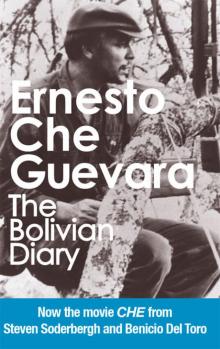 The Bolivian Diary
The Bolivian Diary Caffeine Blues_ Wake Up to the Hidden Dangers of America's #1 Drug ( PDFDrive )
Caffeine Blues_ Wake Up to the Hidden Dangers of America's #1 Drug ( PDFDrive )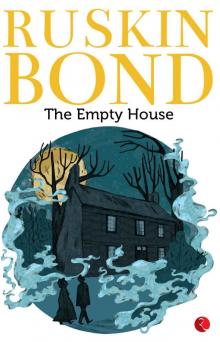 The Empty House
The Empty House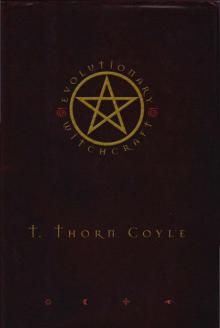 T Thorn Coyle Evolutionary Witchcraft (pdf)
T Thorn Coyle Evolutionary Witchcraft (pdf)![K J Emrick & Kathryn De Winter - [Moonlight Bay Psychic Mystery 01-06] - A Friend in; on the Rocks; Feature Presentation; Manor of; by Chocolate Cake; A-Maze-Ing Death (retail) (epub) Read online](http://freenovelread.comhttps://picture.efrem.net/img/nienyi/k_j_emrick_and_kathryn_de_winter_-_moonlight_bay_psychic_of_by_chocolate_cake_a-maze-ing_death_retail_epub_preview.jpg) K J Emrick & Kathryn De Winter - [Moonlight Bay Psychic Mystery 01-06] - A Friend in; on the Rocks; Feature Presentation; Manor of; by Chocolate Cake; A-Maze-Ing Death (retail) (epub)
K J Emrick & Kathryn De Winter - [Moonlight Bay Psychic Mystery 01-06] - A Friend in; on the Rocks; Feature Presentation; Manor of; by Chocolate Cake; A-Maze-Ing Death (retail) (epub)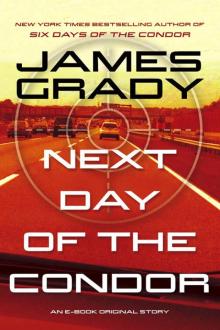 Next Day of the Condor
Next Day of the Condor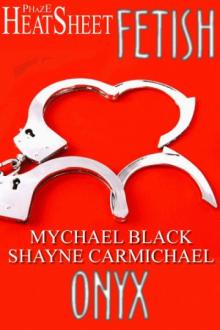 Onyx
Onyx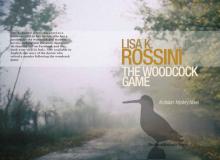 The Woodcock Game: An Italian Mystery Novel
The Woodcock Game: An Italian Mystery Novel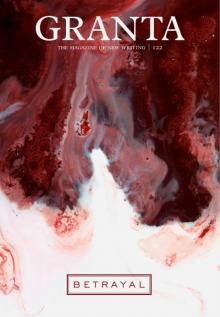 Granta 122: Betrayal (Granta: The Magazine of New Writing)
Granta 122: Betrayal (Granta: The Magazine of New Writing)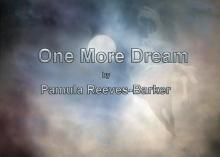 One More Dream
One More Dream Cosa Nostra by Emma Nichols) 16656409 (z-lib.org) (1)-compressed
Cosa Nostra by Emma Nichols) 16656409 (z-lib.org) (1)-compressed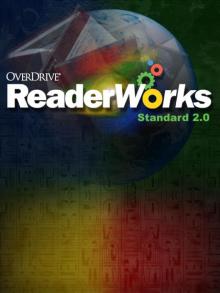 Cowboy by J. M. Snyder
Cowboy by J. M. Snyder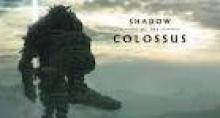 Colossus
Colossus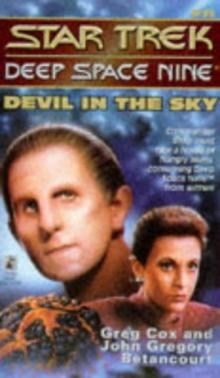 Star Trek - DS9 011 - Devil In The Sky
Star Trek - DS9 011 - Devil In The Sky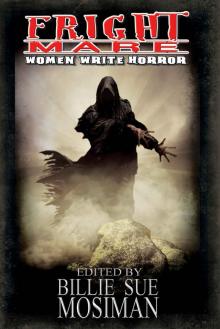 Fright Mare-Women Write Horror
Fright Mare-Women Write Horror The Future Is Japanese
The Future Is Japanese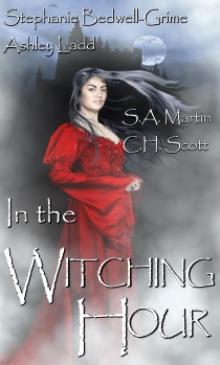 In the Witching Hour
In the Witching Hour Mammoth Books presents Wang's Carpets
Mammoth Books presents Wang's Carpets The Cradle King: The Life of James VI and I, the First Monarch of a United Great Britain
The Cradle King: The Life of James VI and I, the First Monarch of a United Great Britain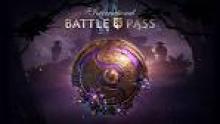 Stalking Moon
Stalking Moon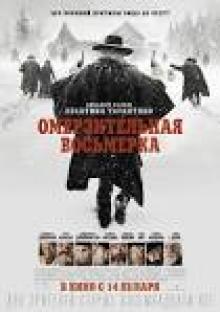 Hostage To The Devil
Hostage To The Devil![Harris, Daisy - Mere Passion [Ocean Shifters 2] (Siren Publishing Classic) Read online](http://i1.bookreadfree.com/i/03/23/harris_daisy_-_mere_passion_ocean_shifters_2_siren_publishing_classic_preview.jpg) Harris, Daisy - Mere Passion [Ocean Shifters 2] (Siren Publishing Classic)
Harris, Daisy - Mere Passion [Ocean Shifters 2] (Siren Publishing Classic) Day, Sunny - Hot in Space (Siren Publishing Ménage and More)
Day, Sunny - Hot in Space (Siren Publishing Ménage and More) Five Books Of The Lives, Heroic Deeds And Sayings Of Gargantua And His Son Pantagruel
Five Books Of The Lives, Heroic Deeds And Sayings Of Gargantua And His Son Pantagruel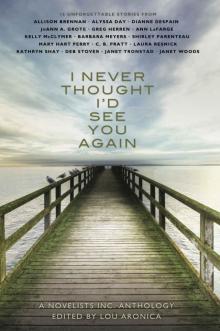 I Never Thought I'd See You Again: A Novelists Inc. Anthology
I Never Thought I'd See You Again: A Novelists Inc. Anthology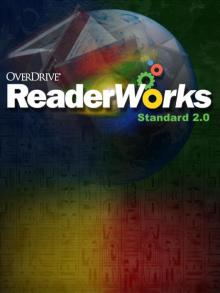 Billion dollar baby bargain.txt
Billion dollar baby bargain.txt![Chenery, Marisa - Turquoise Eye of Horus [Egyptian Shifters 1] (Siren Publishing Classic) Read online](http://i1.bookreadfree.com/i1/03/26/chenery_marisa_-_turquoise_eye_of_horus_egyptian_shifters_1_siren_publishing_classic_preview.jpg) Chenery, Marisa - Turquoise Eye of Horus [Egyptian Shifters 1] (Siren Publishing Classic)
Chenery, Marisa - Turquoise Eye of Horus [Egyptian Shifters 1] (Siren Publishing Classic) Cat Magic
Cat Magic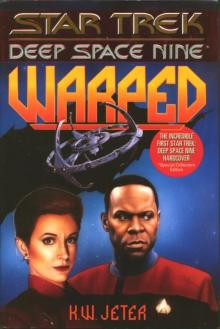 Star Trek - DS9 - Warped
Star Trek - DS9 - Warped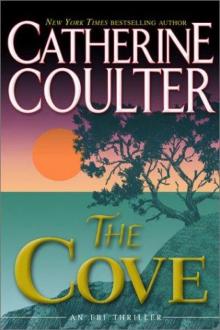 Catherine Coulter - FBI 1 The Cove
Catherine Coulter - FBI 1 The Cove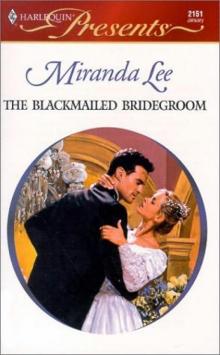 Miranda Lee -The Blackmailed Bridegroom
Miranda Lee -The Blackmailed Bridegroom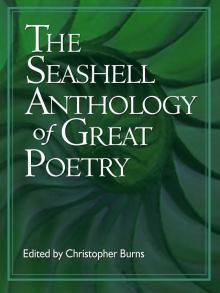 The Seashell Anthology of Great Poetry
The Seashell Anthology of Great Poetry Dragon Moon
Dragon Moon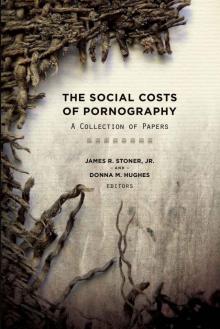 The Social Costs of Pornography: A Collection of Papers
The Social Costs of Pornography: A Collection of Papers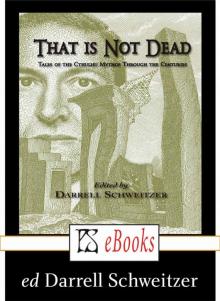 That Is Not Dead
That Is Not Dead Best New Horror: Volume 25 (Mammoth Book of Best New Horror)
Best New Horror: Volume 25 (Mammoth Book of Best New Horror)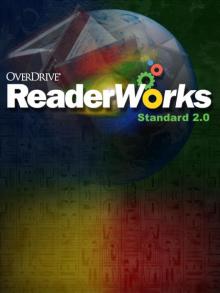 This Christmas by J. M. Snyder
This Christmas by J. M. Snyder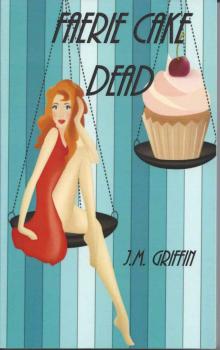 Faerie Cake Dead
Faerie Cake Dead CS-Dante's Twins
CS-Dante's Twins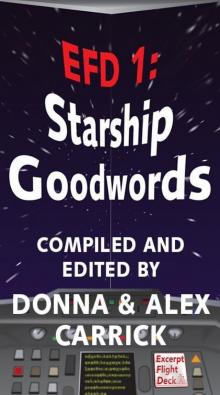 EFD1: Starship Goodwords (EFD Anthology Series from Carrick Publishing)
EFD1: Starship Goodwords (EFD Anthology Series from Carrick Publishing)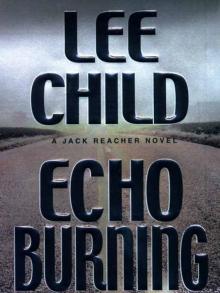 Echo Burning by Lee Child
Echo Burning by Lee Child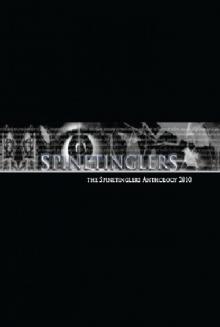 The Spinetinglers Anthology 2010
The Spinetinglers Anthology 2010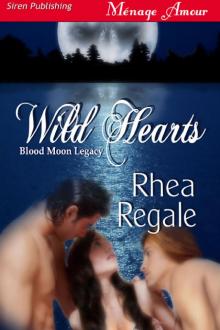 Wild Hearts
Wild Hearts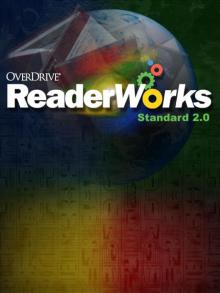 Violet Winspear - Sinner ...
Violet Winspear - Sinner ...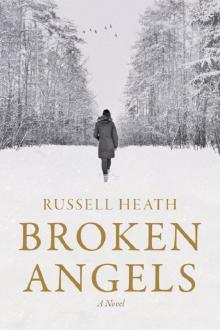 Broken Angels
Broken Angels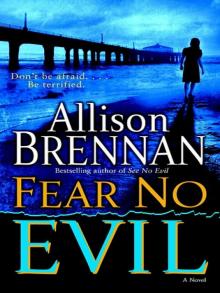 FearNoEvil
FearNoEvil![Santiago, Lara - Range War Bride [Tasty Treats 11] (Siren Publishing PolyAmour) Read online](http://i1.bookreadfree.com/i1/03/30/santiago_lara_-_range_war_bride_tasty_treats_11_siren_publishing_polyamour_preview.jpg) Santiago, Lara - Range War Bride [Tasty Treats 11] (Siren Publishing PolyAmour)
Santiago, Lara - Range War Bride [Tasty Treats 11] (Siren Publishing PolyAmour)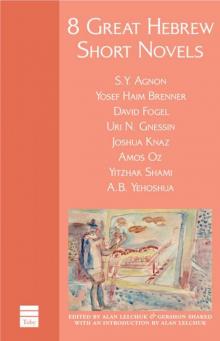 8 Great Hebrew Short Novels
8 Great Hebrew Short Novels This Is How You Die: Stories of the Inscrutable, Infallible, Inescapable Machine of Death
This Is How You Die: Stories of the Inscrutable, Infallible, Inescapable Machine of Death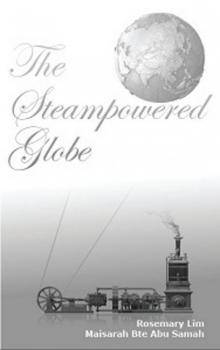 The Steampowered Globe
The Steampowered Globe While We Wait by J. M. Snyder
While We Wait by J. M. Snyder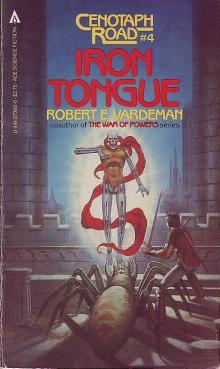 Iron Tongue cr-4
Iron Tongue cr-4![Stieg Larsson [Millennium 02] The Girl Who Played with Fire v5.0 (LIT) Read online](http://i1.bookreadfree.com/i1/03/31/stieg_larsson_millennium_02_the_girl_who_played_with_fire_v5_0_lit_preview.jpg) Stieg Larsson [Millennium 02] The Girl Who Played with Fire v5.0 (LIT)
Stieg Larsson [Millennium 02] The Girl Who Played with Fire v5.0 (LIT)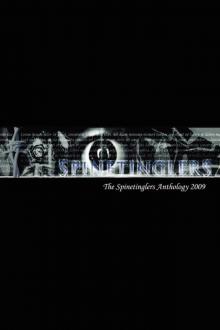 The Spinetinglers Anthology 2009
The Spinetinglers Anthology 2009 Bowles, Jan - Branded by the Texas Rancher (Siren Publishing Classic)
Bowles, Jan - Branded by the Texas Rancher (Siren Publishing Classic) Brown, Berengaria - Vivienne's Vacation (Siren Publishing Ménage and More)
Brown, Berengaria - Vivienne's Vacation (Siren Publishing Ménage and More) Inheritors
Inheritors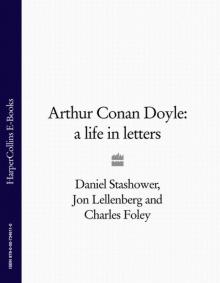 Arthur Conan Doyle: A Life in Letters
Arthur Conan Doyle: A Life in Letters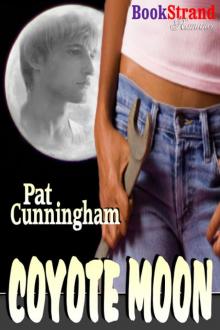 Cunningham, Pat - Coyote Moon (BookStrand Publishing Romance)
Cunningham, Pat - Coyote Moon (BookStrand Publishing Romance)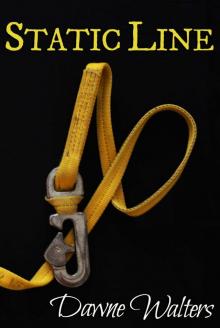 Static Line
Static Line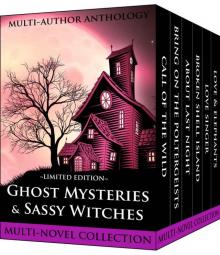 Ghost Mysteries & Sassy Witches (Cozy Mystery Multi-Novel Anthology)
Ghost Mysteries & Sassy Witches (Cozy Mystery Multi-Novel Anthology) Elizabeth Neff Walker - Puppy Love
Elizabeth Neff Walker - Puppy Love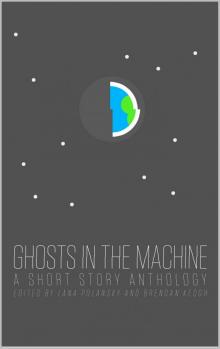 Ghosts in the Machine
Ghosts in the Machine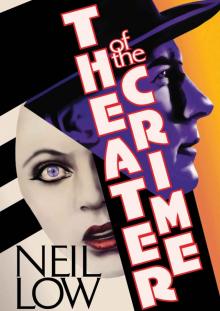 Theater of the Crime (Alan Stewart and Vera Deward Murder Mysteries Book 6)
Theater of the Crime (Alan Stewart and Vera Deward Murder Mysteries Book 6)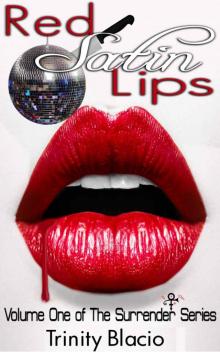 Red Satin Lips, Book One (The Surrender Series)
Red Satin Lips, Book One (The Surrender Series)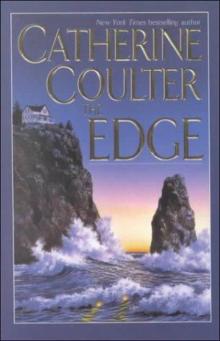 Catherine Coulter - FBI 4 The Edge
Catherine Coulter - FBI 4 The Edge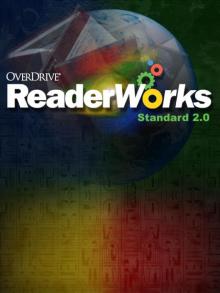 StateoftheUnion
StateoftheUnion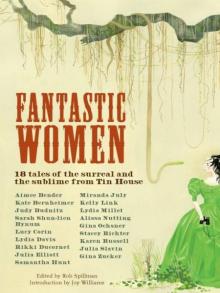 Fantastic Women: 18 Tales of the Surreal and the Sublime from Tin House
Fantastic Women: 18 Tales of the Surreal and the Sublime from Tin House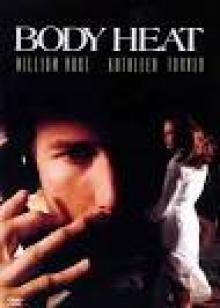 Sara Wood-Expectant Mistress original
Sara Wood-Expectant Mistress original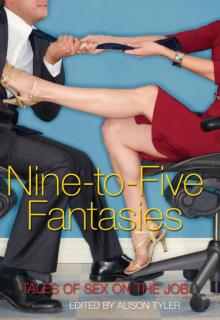 Nine-to-Five Fantasies: Tales of Sex on the Job
Nine-to-Five Fantasies: Tales of Sex on the Job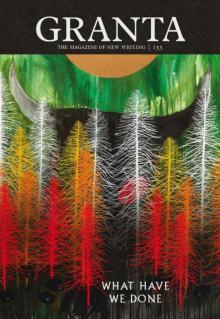 Granta 133
Granta 133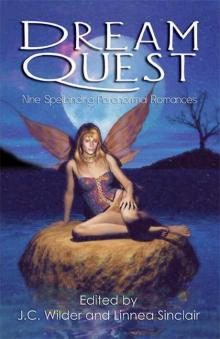 Dream Quest
Dream Quest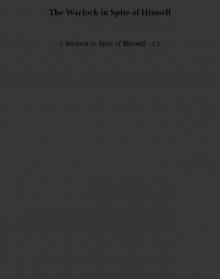 The Warlock in Spite of Himself wisoh-2
The Warlock in Spite of Himself wisoh-2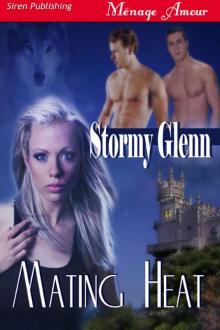 Glenn, Stormy - Mating Heat (Siren Publishing Ménage Amour)
Glenn, Stormy - Mating Heat (Siren Publishing Ménage Amour)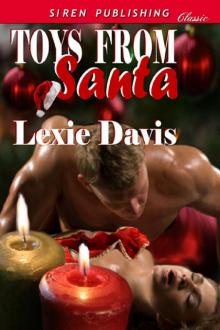 Davis, Lexie - Toys from Santa (Siren Publishing Classic)
Davis, Lexie - Toys from Santa (Siren Publishing Classic)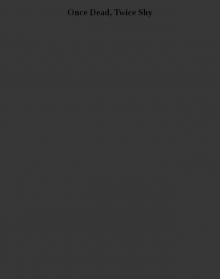 Once Dead, Twice Shy
Once Dead, Twice Shy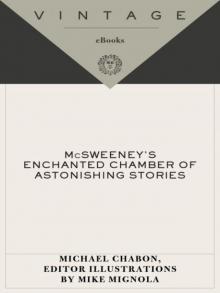 McSweeney's Enchanted Chamber of Astonishing Stories
McSweeney's Enchanted Chamber of Astonishing Stories Zombies: Shambling Through the Ages
Zombies: Shambling Through the Ages Baghdad Without a Map
Baghdad Without a Map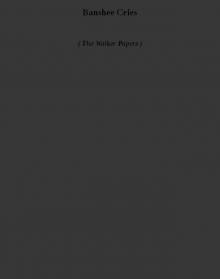 Banshee Cries (the walker papers)
Banshee Cries (the walker papers)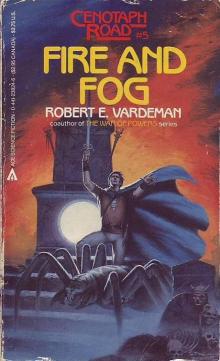 Fire and Fog cr-5
Fire and Fog cr-5 The Twelve Hot Days of Christmas
The Twelve Hot Days of Christmas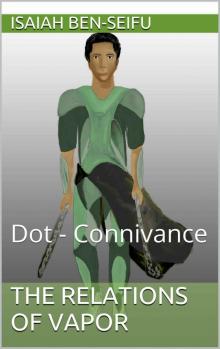 The Relations of Vapor: Dot - Connivance
The Relations of Vapor: Dot - Connivance![Harris, Daisy - Mere Temptation [Ocean Shifters 1] (Siren Publishing Classic) Read online](http://i1.bookreadfree.com/i2/04/11/harris_daisy_-_mere_temptation_ocean_shifters_1_siren_publishing_classic_preview.jpg) Harris, Daisy - Mere Temptation [Ocean Shifters 1] (Siren Publishing Classic)
Harris, Daisy - Mere Temptation [Ocean Shifters 1] (Siren Publishing Classic)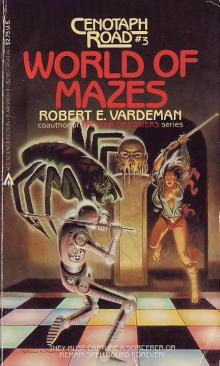 World of Mazes cr-3
World of Mazes cr-3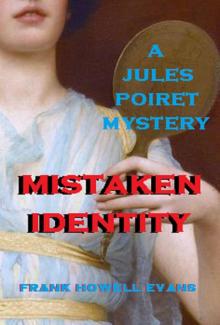 Mistaken Identity (A Jules Poiret Mystery Book 26)
Mistaken Identity (A Jules Poiret Mystery Book 26)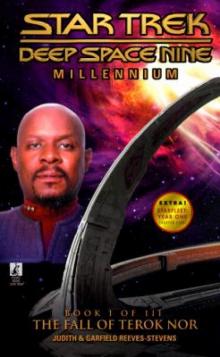 Star Trek - DS9 - Fall of Terok Nor
Star Trek - DS9 - Fall of Terok Nor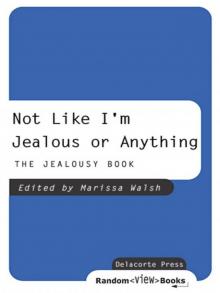 Not Like I'm Jealous or Anything: The Jealousy Book (Ruby Oliver)
Not Like I'm Jealous or Anything: The Jealousy Book (Ruby Oliver)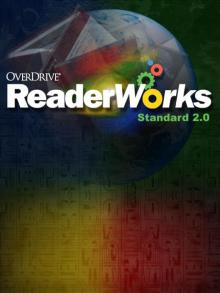 Skaterboy by J. M. Snyder
Skaterboy by J. M. Snyder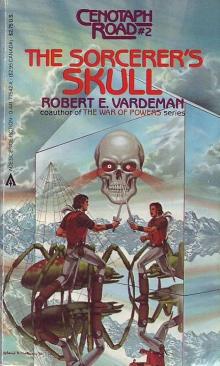 The Sorcerer_s Skull cr-2
The Sorcerer_s Skull cr-2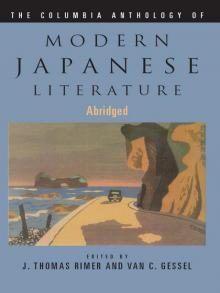 The Columbia Anthology of Modern Japanese Literature (Modern Asian Literature Series)
The Columbia Anthology of Modern Japanese Literature (Modern Asian Literature Series)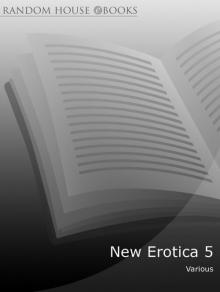 New Erotica 5
New Erotica 5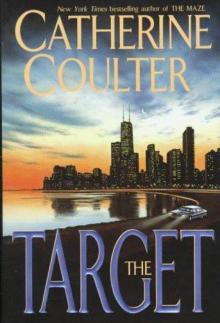 Catherine Coulter - FBI 3 The Target
Catherine Coulter - FBI 3 The Target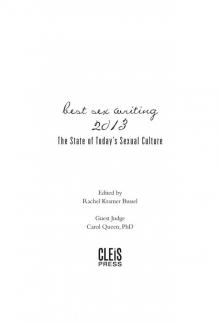 Best Sex Writing 2013: The State of Today's Sexual Culture
Best Sex Writing 2013: The State of Today's Sexual Culture Factoring Humanity
Factoring Humanity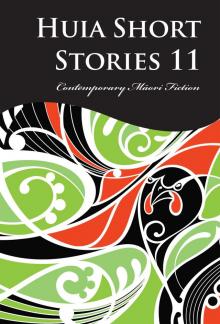 Huia Short Stories 11
Huia Short Stories 11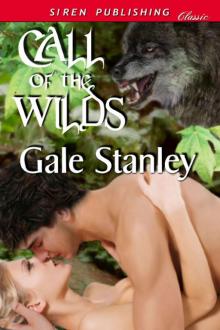 Call of the Wilds
Call of the Wilds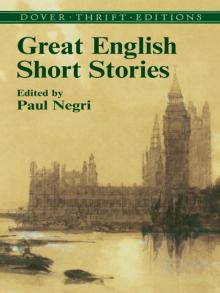 Great English Short Stories (Dover Thrift Editions)
Great English Short Stories (Dover Thrift Editions)![Ramagos, Tonya - Logan's Lessons [Sunset Cowboys 2] (Siren Publishing Classic) Read online](http://i1.bookreadfree.com/i2/04/10/ramagos_tonya_-_logans_lessons_sunset_cowboys_2_siren_publishing_classic_preview.jpg) Ramagos, Tonya - Logan's Lessons [Sunset Cowboys 2] (Siren Publishing Classic)
Ramagos, Tonya - Logan's Lessons [Sunset Cowboys 2] (Siren Publishing Classic)![Morgan, Nicole - Sweet Redemption [Sweet Awakenings 1] (Siren Publishing Allure) Read online](http://i1.bookreadfree.com/i2/04/10/morgan_nicole_-_sweet_redemption_sweet_awakenings_1_siren_publishing_allure_preview.jpg) Morgan, Nicole - Sweet Redemption [Sweet Awakenings 1] (Siren Publishing Allure)
Morgan, Nicole - Sweet Redemption [Sweet Awakenings 1] (Siren Publishing Allure)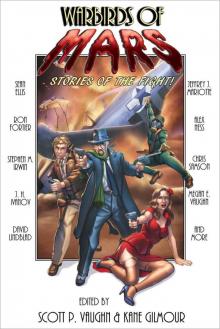 Warbirds of Mars: Stories of the Fight!
Warbirds of Mars: Stories of the Fight!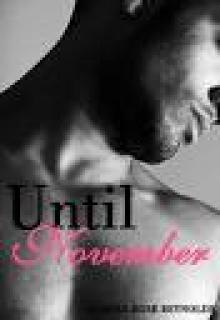 Original Version of Edited Godwin Stories(lit)
Original Version of Edited Godwin Stories(lit) Where The Hell is Boulevard?
Where The Hell is Boulevard?![Chemical [se]X Read online](http://i1.bookreadfree.com/i2/04/13/chemical_sex_preview.jpg) Chemical [se]X
Chemical [se]X Allison Brennan - See No Evil
Allison Brennan - See No Evil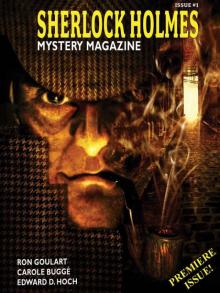 Sherlock Holmes Mystery Magazine #1
Sherlock Holmes Mystery Magazine #1